Bilal Mateen
Faking feature importance: A cautionary tale on the use of differentially-private synthetic data
Mar 02, 2022
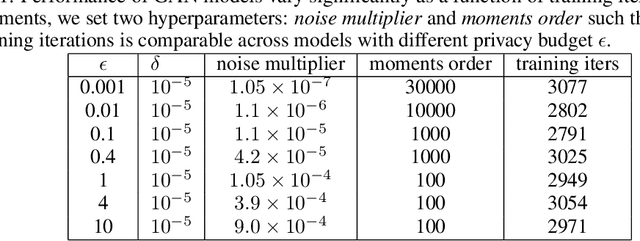

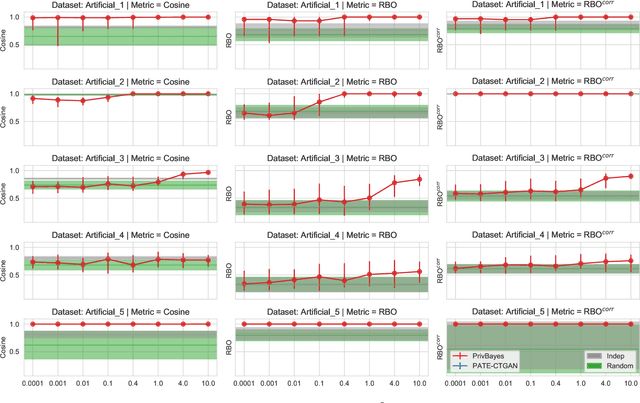
Abstract:Synthetic datasets are often presented as a silver-bullet solution to the problem of privacy-preserving data publishing. However, for many applications, synthetic data has been shown to have limited utility when used to train predictive models. One promising potential application of these data is in the exploratory phase of the machine learning workflow, which involves understanding, engineering and selecting features. This phase often involves considerable time, and depends on the availability of data. There would be substantial value in synthetic data that permitted these steps to be carried out while, for example, data access was being negotiated, or with fewer information governance restrictions. This paper presents an empirical analysis of the agreement between the feature importance obtained from raw and from synthetic data, on a range of artificially generated and real-world datasets (where feature importance represents how useful each feature is when predicting a the outcome). We employ two differentially-private methods to produce synthetic data, and apply various utility measures to quantify the agreement in feature importance as this varies with the level of privacy. Our results indicate that synthetic data can sometimes preserve several representations of the ranking of feature importance in simple settings but their performance is not consistent and depends upon a number of factors. Particular caution should be exercised in more nuanced real-world settings, where synthetic data can lead to differences in ranked feature importance that could alter key modelling decisions. This work has important implications for developing synthetic versions of highly sensitive data sets in fields such as finance and healthcare.
A Recommendation and Risk Classification System for Connecting Rough Sleepers to Essential Outreach Services
Jul 30, 2020

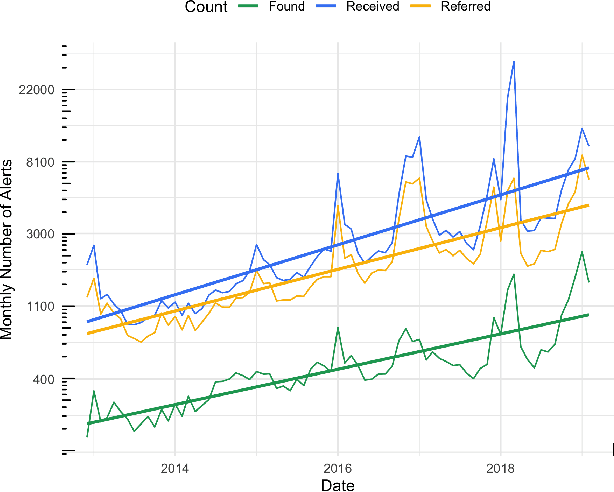
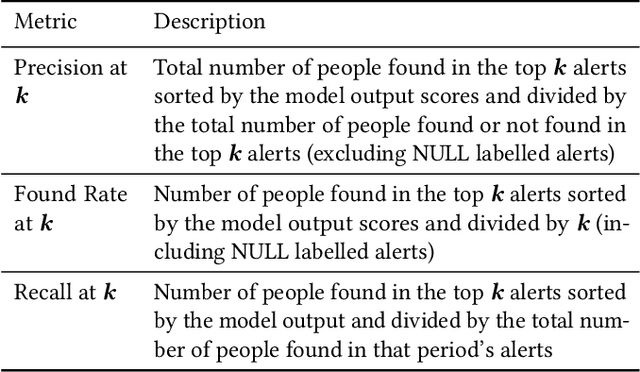
Abstract:Rough sleeping is a chronic problem faced by some of the most disadvantaged people in modern society. This paper describes work carried out in partnership with Homeless Link, a UK-based charity, in developing a data-driven approach to assess the quality of incoming alerts from members of the public aimed at connecting people sleeping rough on the streets with outreach service providers. Alerts are prioritised based on the predicted likelihood of successfully connecting with the rough sleeper, helping to address capacity limitations and to quickly, effectively, and equitably process all of the alerts that they receive. Initial evaluation concludes that our approach increases the rate at which rough sleepers are found following a referral by at least 15\% based on labelled data, implying a greater overall increase when the alerts with unknown outcomes are considered, and suggesting the benefit in a trial taking place over a longer period to assess the models in practice. The discussion and modelling process is done with careful considerations of ethics, transparency and explainability due to the sensitive nature of the data in this context and the vulnerability of the people that are affected.
NIPS - Not Even Wrong? A Systematic Review of Empirically Complete Demonstrations of Algorithmic Effectiveness in the Machine Learning and Artificial Intelligence Literature
Dec 18, 2018



Abstract:Objective: To determine the completeness of argumentative steps necessary to conclude effectiveness of an algorithm in a sample of current ML/AI supervised learning literature. Data Sources: Papers published in the Neural Information Processing Systems (NeurIPS, n\'ee NIPS) journal where the official record showed a 2017 year of publication. Eligibility Criteria: Studies reporting a (semi-)supervised model, or pre-processing fused with (semi-)supervised models for tabular data. Study Appraisal: Three reviewers applied the assessment criteria to determine argumentative completeness. The criteria were split into three groups, including: experiments (e.g real and/or synthetic data), baselines (e.g uninformed and/or state-of-art) and quantitative comparison (e.g. performance quantifiers with confidence intervals and formal comparison of the algorithm against baselines). Results: Of the 121 eligible manuscripts (from the sample of 679 abstracts), 99\% used real-world data and 29\% used synthetic data. 91\% of manuscripts did not report an uninformed baseline and 55\% reported a state-of-art baseline. 32\% reported confidence intervals for performance but none provided references or exposition for how these were calculated. 3\% reported formal comparisons. Limitations: The use of one journal as the primary information source may not be representative of all ML/AI literature. However, the NeurIPS conference is recognised to be amongst the top tier concerning ML/AI studies, so it is reasonable to consider its corpus to be representative of high-quality research. Conclusion: Using the 2017 sample of the NeurIPS supervised learning corpus as an indicator for the quality and trustworthiness of current ML/AI research, it appears that complete argumentative chains in demonstrations of algorithmic effectiveness are rare.
Probabilistic supervised learning
Apr 28, 2018
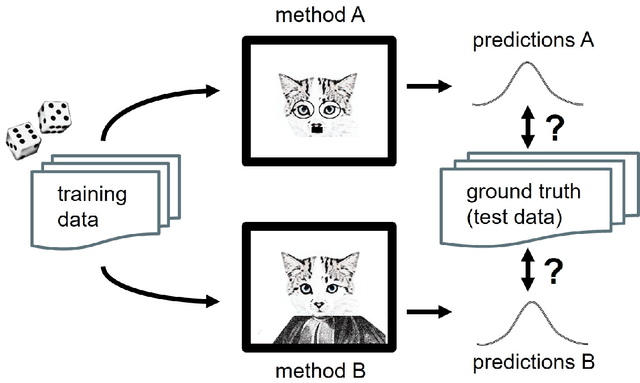

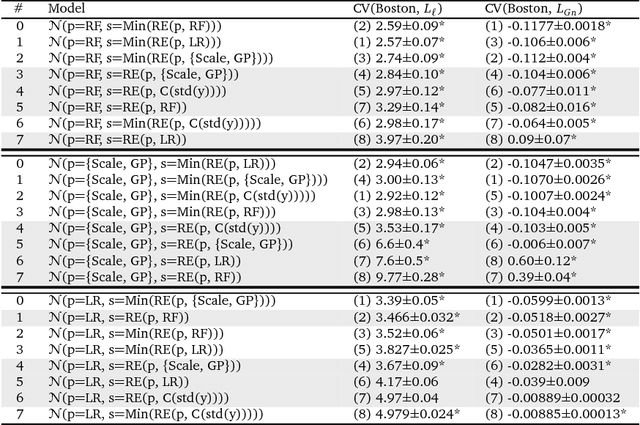
Abstract:Predictive modelling and supervised learning are central to modern data science. With predictions from an ever-expanding number of supervised black-box strategies - e.g., kernel methods, random forests, deep learning aka neural networks - being employed as a basis for decision making processes, it is crucial to understand the statistical uncertainty associated with these predictions. As a general means to approach the issue, we present an overarching framework for black-box prediction strategies that not only predict the target but also their own predictions' uncertainty. Moreover, the framework allows for fair assessment and comparison of disparate prediction strategies. For this, we formally consider strategies capable of predicting full distributions from feature variables, so-called probabilistic supervised learning strategies. Our work draws from prior work including Bayesian statistics, information theory, and modern supervised machine learning, and in a novel synthesis leads to (a) new theoretical insights such as a probabilistic bias-variance decomposition and an entropic formulation of prediction, as well as to (b) new algorithms and meta-algorithms, such as composite prediction strategies, probabilistic boosting and bagging, and a probabilistic predictive independence test. Our black-box formulation also leads (c) to a new modular interface view on probabilistic supervised learning and a modelling workflow API design, which we have implemented in the newly released skpro machine learning toolbox, extending the familiar modelling interface and meta-modelling functionality of sklearn. The skpro package provides interfaces for construction, composition, and tuning of probabilistic supervised learning strategies, together with orchestration features for validation and comparison of any such strategy - be it frequentist, Bayesian, or other.
 Add to Chrome
Add to Chrome Add to Firefox
Add to Firefox Add to Edge
Add to Edge